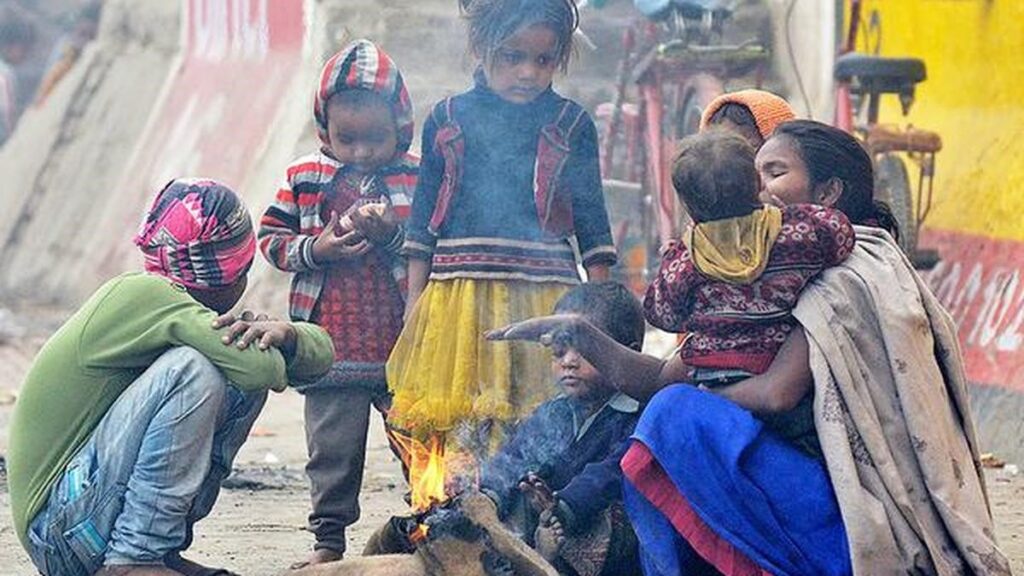High Fertility in Bihar: Cultural and Economic Dimensions
Syllabus:
GS-2:
Issues Related to Children , Issues Related to Women , Gender Equality , Health , Government Policies & Interventions
Focus:
The Sample Registration System (SRS) Report 2021 by the Registrar General of India revealed that Bihar has the highest Total Fertility Rate (TFR) in the country at 3.0, while India’s national average stands at 2.0. This has reignited discussions on the role of poverty, culture, and governance in influencing fertility patterns in India’s laggard states. The findings also highlight the need for effective policy implementation, which often relies on the dedication of civil servants, including IAS officers whose salary and job profile play a crucial role in attracting talent to address such challenges.

Understanding Bihar’s Fertility Landscape:
a. TFR Trends and Replacement Rate
● Bihar’s TFR has remained around 3.0 for the last 6-7 years, indicating a persistently high birth rate of Bihar.
● It is the only Indian state projected to reach the replacement-level fertility (2.1) by 2039.
● Nationally, TFR has declined to 2.0, with states like Delhi and West Bengal reporting 1.4.
b. Contradictory Indicators
● Infant Mortality Rate (IMR) has declined to 27 per 1,000 live births in Bihar from 42, indicating a significant mortality decline.
● Woman education and other socio-developmental indicators have improved.
● Despite this, high fertility persists, suggesting a disconnect between development and fertility in demography.
| About Total Fertility Rate (TFR):
● The total fertility rate definition refers to the average number of children a woman would have during her reproductive years.
● A TFR of 2.1 is considered replacement-level fertility.
● The Bihar fertility rate is 3.0, indicating high population growth potential, influenced by economic, cultural, and educational factors.
Sample Registration System (SRS) 2021:
● The SRS 2021 is a statistical system by the Registrar General of India.
● It provides reliable annual data on birth rates, death rates, and fertility indicators.
● SRS 2021 showed Bihar had the highest TFR (3.0), while India’s average declined to 2.0, below replacement level.
Replacement-level fertility:
● Replacement-level fertility refers to a TFR of 2.1, where each generation replaces itself without increasing population.
● India has achieved this level nationally, but states like Bihar lag behind.
● Achieving this level is crucial for population stabilization and sustainable development.
Infant Mortality Rate (IMR):
● IMR measures the number of infant deaths per 1,000 live births.
● Bihar’s IMR fell from 42 to 27, indicating better child health services.
● Despite falling IMR, high fertility persists, suggesting deep-rooted cultural and socioeconomic factors at play.
Multidimensional Poverty Index (MPI):
● MPI goes beyond income per capita to measure poverty using factors like health, education, and living standards.
● Bihar shows poverty reduction in MPI, yet high fertility remains, highlighting the limitations of MPI in capturing fertility determinants like employment and migration.
Urban-Rural fertility gap:
● This refers to the difference in TFR between urban and rural areas.
● Nationally: Urban TFR = 1.6, Rural TFR = 2.2.
● Bihar: Urban TFR = 2.3, Rural = 3.17.
● The gap shows how urbanization and economic development influence fertility behavior.
Patriarchal norms
● In patriarchal societies, men often dominate decision-making, including on family size and contraceptive use.
● In Bihar, elderly women (like mothers-in-law) also exert control over younger women’s reproductive choices.
● These norms reduce women’s rights and sustain high fertility.
ASHA workers:
● Accredited Social Health Activists (ASHAs) are government health workers promoting maternal and child health.
● In Bihar, their outreach is often mediated by family elders, limiting their effectiveness.
● Their potential is undermined by patriarchal resistance and poor health infrastructure.
Female literacy
● Educated women tend to have fewer children due to better awareness, autonomy, and job prospects.
● Bihar’s female literacy rate (~53% in 2011) is among India’s lowest.
● Literacy gains haven’t translated into empowerment, due to limited employment and traditional norms. |
Cultural and Societal Drivers of Fertility:
a. Fertility Norms and Preferences
● Nationally, 67% of women consider two children ideal, but in Bihar, only 49.6% agree.
● Cultural preferences in Bihar often support larger families, partly due to traditional agrarian mindsets and son preference.
b. Gendered Roles and Decision-Making
● Patriarchal norms influence women’s reproductive choices and child-bearing decisions.
● Field studies show that mothers-in-law mediate interactions between ASHA workers and younger women, limiting women’s autonomy.
● Women’s increasing literacy hasn’t significantly translated into empowerment or employment, dampening its impact on fertility.
Poverty and Fertility: A Complex Relationship
a. Economic Factors Beyond Income
● Multidimensional Poverty Index (MPI) shows Bihar’s poverty has declined, but TFR remains high.
● Experts argue MDP doesn’t capture factors like urbanization, employment, and livelihood opportunities, which critically affect fertility behavior.
b. Rural-Urban Fertility Disparities
● National average: Urban TFR = 1.6, Rural TFR = 2.2.
● Bihar: Urban TFR = 2.3, Rural TFR = 3.17.
● Even Bihar’s urban fertility is above the replacement rate—indicative of conscious cultural choices rather than lack of awareness or resources.
Education, Employment, and Family Structure:
a. Role of Education and Literacy
● CM Nitish Kumar has promoted schemes like bicycles for girls to improve female literacy.
● Female literacy in Bihar was ~53% in 2011—still low compared to national standards.
● Education correlates positively with less fertility, but its effect is mediated by employment and household dynamics.
b. Aspirations for Sons and Household Strategies
● Among those who desire three children, 88.2% want two sons.
● Due to the low statistical probability of having two sons successively (26.4%), families often have more children than ideal.
c. Employment and Economic Insecurity
● Bihar is one of the least industrialised states with surplus labour and high out-migration.
● Poor households see children as labour assets, reinforcing the economic utility of larger families.
Broader Political and Policy Implications
a. Regional Fertility Divide and Democracy
● The Hindi heartland states (Bihar, UP, MP, Rajasthan) have higher TFRs compared to southern states.
● Upcoming delimitation post-Census will likely increase political weight of high-TFR states.
b. Equity and Representation Dilemma
● Parliamentary constituencies in high-TFR states could end up with 25-30 lakh voters per MP, while southern states with lower populations may have smaller constituencies.
● Raises concerns over whether states with better social outcomes will be penalised politically and financially in terms of resource allocation and representation.
Conclusion:
Bihar’s persistently high Total Fertility Rate reflects a complex interplay of poverty, cultural norms, and structural economic deficiencies, rather than just underdevelopment. Addressing it demands multi-pronged strategies, including women’s empowerment, educational reform, economic diversification, and family planning movement rooted in local contexts. The issue also calls for careful handling in future delimitation and fiscal allocation discussions to ensure equitable democratic representation.
To address the high fertility rate in Bihar and similar regions, policymakers need to focus on several key areas:
Woman education: Enhancing educational opportunities for women is crucial. The advantages of female education extend beyond fertility control to overall societal development. The female education impact on society includes improved health outcomes, economic participation, and decision-making power.
Economic development: Boosting the Gross Domestic Product and income per capita can lead to reduced fertility rates. Investments in industrial production and job creation can provide alternatives to large families as economic security.
Reproductive health: Improving access to and knowledge about contraceptive use is essential. Increasing the contraceptive prevalence rate through awareness programs and better healthcare infrastructure can significantly impact fertility rates.
Population policies: Implementing effective birth rate reduction strategies and programmes to reduce birth rate that are sensitive to local cultural contexts is crucial.
Modernization factors: Addressing the fertility transition through a combination of technology advancements, improved human capital, and progressive social norms can accelerate the demographic transition.
Religious authority: Engaging with religious leaders to promote smaller family sizes and support fertility control measures can be effective in regions where religious beliefs strongly influence family planning decisions.
These strategies, combined with ongoing efforts to reduce poverty and improve overall living standards, can contribute to a more balanced population growth and fertility decline in Bihar and similar regions. The goal is to achieve a sustainable fertility transition that aligns with the state’s development objectives and improves the quality of life for its residents.
Source: TH
Mains Practice Question:
Despite improvements in infant mortality and female literacy, Bihar continues to have the highest Total Fertility Rate in India. Discuss the cultural, economic, and political factors contributing to this trend. In your view, what policy approaches are necessary to address both fertility and regional equity concerns?






